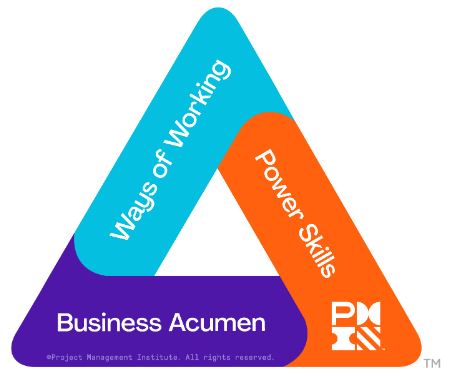
PMI Talent Triangle: Business Acumen (Strategic and Business Management)
Welcome to the PMO Strategies Podcast + Blog, where PMO leaders become IMPACT Drivers! Today we are going to dive right into changing your mindset as a PMO leader. If you haven’t listened to episode 000, the Introductory episode or 001, The PMO Reset, definitely go back and listen to or read those first. Doing so will set the framework for how we landed here, on mindset first. The first step in shifting our mindset is to find focus. In this episode/post we are going to learn specific techniques to help you distill what is important and get laser focused to create the IMPACT you desire for your organization.
Finding Focus
If you are like me, you like to have about 50 things going on at once. After all, there’s always a little downtime on this project or that one, and that’s just enough time to squeeze in some work on this one over here…and that one over there…yeah, that’s the story of my life. BUT, here’s what I’ve always found to be true…when I slow down and focus on just one thing at a time, I can get more done in the long run. If you are being completely honest with yourself, you probably know this is true for you, as well. As much as we want to think we are multitaskers, what we are really doing is a lot of task switching and creating a lot of rework and lost productivity time in the process. So, here’s the techniques I learned to employ when I was a PMO leader inside organizations and this is secret #1 I share with my students and clients today.
1. Solve Business Problems
When starting a PMO, most of what you read or learn in courses suggests that you start by building a charter and creating your vision and mission. Or, even worse, they tell you to figure out your PMO model or type. Then, it’s off to building and creating process, methodology, and templates. Sadly, this is missing the most important step and assumes that you already know what’s best for the organization. But in much of the literature and courses, there’s no defined process to ask that most important, yet very simple question. Successful PMO leaders understand that they don’t have all the answers. We have no business creating anything until we’ve determined what business problem we are solving. The most important step when starting or refreshing your PMO is ensuring you have answered the question, “Why is the PMO here and what business problem must be solved?” First things first. We must assess the organization for IMPACT opportunities to understand your PMO purpose. Before you create the list of services you will provide or start building templates and process, you need a mission, a greater purpose that you are fulfilling through the PMO construct. Your mission is not to manage projects. Your mission is not to create templates and tools. Your mission is to get to outcomes that positively IMPACT the organization you serve by driving overall greater throughput and higher return on investment (ROI). To do that, you need to be very clear on the business pain points, challenges, or new opportunities that your PMO will help solve. Get crystal clear on that before you do anything else.
Even if you think you know what’s best for them, you are probably wrong. Don’t guess. You must not assume you know what’s best for the organization. Whether you’ve been there 1 month or 20 years, you still aren’t inside the heads of the business leaders that are creating the opportunity for the PMO. Ask them. Talk to them a lot! They will eventually tell you what you need to know, but you must be listening for it because sometimes it’s not obvious or on the surface. Sometimes, the real reasons the PMO has been started isn’t even for the reasons they’ve been telling everyone. So, we have got to be listening intently for the truth. That means you must stop telling, talking, selling, and convincing and just listen, observe, and pay attention to the subtleties. The REAL WIIFM (what’s in it for me) for them will come out if you are looking for it. But what if I do know what’s best for them? Who cares? Not them. Sometimes people won’t take the medicine they really need until they trust that it’s really going to make them feel better. So, make them feel better first. Solve some easier to reach pain points for them to build trust. Then you can get their engagement to consider the medicine that they really need. But even when you do start giving them the medicine, you must do so in a way that is still very focused on the outcomes more than the process. More on this in the coming steps.
2. Drive Laser-Focus with Solutions
Avoid trying to do too many things at once. You will only overwhelm yourself and your team and your stakeholders won’t be able to digest all the change at once anyway. As an IMPACT PMO leader, you understand that your job is to ensure that your team is dedicated to doing one thing at a time. Build it, drive IMPACT, get results, and then you can focus on the next thing. Use that IMPACT momentum to continue to build credibility and move on to the next service or capability when the organization is ready to absorb the next change. It’s not enough for you to have a singularly focused mindset. Your team must also get laser-focused on driving IMPACT with you. Help them by coaching and guiding them on priorities and connect the work they are doing to the “Why?” and business purpose of your PMO. The clearer they can see the finish line, the faster they can drive toward it.
3. Don’t Boil the Ocean
When we’re starting out with a new PMO or repairing an existing one, we’re trying to build credibility in the organization and get our PMO the needed recognition and support. Many PMO leaders do the right thing by assessing the organization for IMPACT opportunities, they talk to stakeholders about the business pain points, and then sometimes they make a fatal mistake…the mistake that leads to so many PMOs failing to meet expectations. Sometimes, PMO leaders say “yes” to everyone and everything. Of course, our hearts are in the right place when we do this, but the fear of not pleasing everyone puts us in the painful position of not knowing what to say “no” to. Then, we struggle to find the time or resources to make a dent in all the promises or we spread ourselves so thinly that we don’t sleep and that takes a toll on us. The desire to say yes is completely normal. After all, how can you build credibility if you don’t address the pain? I’m the first one to tell you that you don’t have long to make an IMPACT. Many leaders are impatient or have forces pressing upon them to get results quickly, so you won’t have months or years of building and building before you show your value and create a return for the investment they made in you and your team. However, you must be thoughtful about where you focus first. You will please no one if you fail to deliver quality solutions that get results. That requires you to slow down and focus on one thing at a time. Not boiling the ocean means to find that most important pain point or quick win opportunity to show your value, then focus on that until you solve that problem. Then, you move on to the next one and focus on that until it’s done. This might mean that you have to say “yes” to starting with one business unit and then “yes, you are next” to the next business unit. All along, you are building credibility in a sustainable way without losing your sanity or making promises you can’t keep. While it is so hard to contain both our excitement and desire, and pace ourselves appropriately, just remember that while saying “yes, but just not yet” to a stakeholder is MUCH better than saying “yes” and then failing to deliver or delivering poorly. Your goal is building credibility and delivering IMPACT. That means you must get it right and getting it right takes time and focus. You will be a lot more effective if you put one pot on the stove at a time instead of trying to boil the entire ocean at once.
4. Balance Tactics and Strategy
The IMPACT PMO leader understands that they must find that delicate balance between tactics and strategy. Many of us have heard that we must “be more strategic” to support the business. They say we have been way too tactical and unable to rise to the right level of vision to understand where the business is trying to go. Sometimes, the reason for this is more in what we say than how we think. It might be that we can clearly understand the strategy of the organization, but then we throw a bunch of PM speak at them and talk about how we are going to process the heck out of that strategy. In other cases, we have been so busy focusing on the trees (the tactics of getting the projects done), that we haven’t taken the time to see the forest (that bigger picture strategy). When we do that, we can’t help the business leaders drive effective decision making across the entire portfolio because we don’t know how to guide them. They need our help in driving the entire organizational strategy and they must know you understand that big picture, as well as how to Get. It. Done. The goal of the IMPACT PMO leader is finding and maintaining that balance. When you understand the overall strategy and where the business is going, you are the organization realize their desired outcomes. You can help drive decisions more effectively and guide the project teams through IMPACT delivery with the right focus. But, if we stay 100% focused in the clouds, we can’t turn that strategic vision into IMPACT and the strategic perspective is meaningless.
T hanks for taking the time to check out the podcast!
hanks for taking the time to check out the podcast!
I welcome your feedback and insights!
I’d love to know what you think and if you love it, please leave a rating and review in your favorite podcast player. Please leave a comment below to share your thoughts. See you online!
Warmly,
Laura Barnard








[…] Previous […]
[…] If you haven’t listened to episode 000, the Introductory episode or 001, The PMO Reset, or 002 talking all about instilling focus, or even 003 redefining what success looks like – then definitely go back and listen to or […]
[…] If you haven’t listened to episode 000, the Introductory episode or 001, The PMO Reset, 002 Instill Focus, 003 Measure Outcomes, 004 Perform Relentlessly, 005 Adapt to Thrive, or 006 Communicate with […]
Very structured approach indeed
Extremely useful for project management